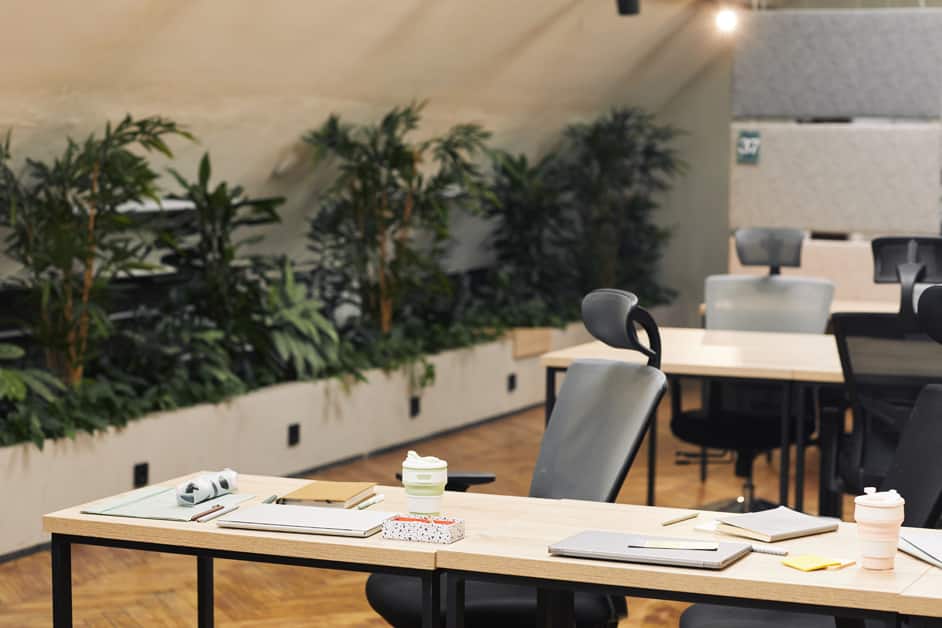Ergonomic Workstation Set Up
Reduce knee pain by setting up an ergonomic workspace. Your knee should be kept in a comfy position. Here are tips to help you create an ergonomic workstation quickly and easily:
- Make sure your chair is adjustable and comfortable.
- Position your desk and chair so that your knees are bent at a 90-degree angle.
- Place the computer monitor at eye level.
- Use a footrest to support your feet.
- Place the keyboard and mouse within easy reach.
- Take regular breaks to move and stretch.
Invest in an ergonomic chair
An ergonomic chair is a must for any comfortable, healthy and productive work environment. They come in many sizes and shapes and are designed to support your spine and other body parts. Adjustable features let you find a height that suits you. It’s important to adjust the chair correctly to prevent fatigue.
When searching for an ergonomic chair, look for these features:
- Adjustable height
- Armrests with adjustable heights and angles
- Recline options like tilt-lock or tension adjustability
- Depth adjustability (for lumbar support)
- Pneumatic lift (backrest angle)
Also look for padding in key areas like the backrest and seat cushion. Comfort is key! Lastly, make sure it fits your budget. High-end chairs can be expensive, but mid-range options still provide great support and comfort.
Place your computer monitor at the right height
Monitor placement is a must for a good ergonomic set up. Have the top of the screen at or slightly below eye level, and at least 24 inches away from you. You might need to adjust the height depending on your desk. If it is not adjustable, get a device like a laptop stand or external riser to get it in the right spot.
Multiple monitors can be helpful for tasks needing extra visibility. Nevertheless, each monitor should be in the right spot, so your neck and shoulders stay in an ergonomically correct posture. Shorter people may need to lower their monitor and taller individuals may need to raise theirs.
Adjust your keyboard and mouse
When setting up your workstation, it’s important to adjust your keyboard and mouse to fit your body’s natural posture. This prevents aches and pains from sitting in awkward positions for too long.
Your keyboard should be slightly lower than your elbows. It should be big enough that you don’t need to reach too far while typing. Adjust the tilt to keep your wrists in a neutral position. Alternatively, buy an ergonomic one.
Your mouse should be on the same surface as your keyboard, close by. It should be low enough so you don’t have to lift your arm. Ensure your wrists stay straight when using it. Buy an ergonomic mouse with wrist support if they bend.
Desk Posture
Desk posture is a key part of an ergonomic workplace. If you don’t sit correctly, your knees can suffer. This can lead to pain and discomfort in the long run.
Here are some tips for proper desk posture to reduce knee pain:
Keep your back straight
Maintaining the right posture is vital to avoid back and neck pain, as well as other work-related injuries. When seated at a desk, keep your back straight and spine aligned. This helps prevent strain on the muscles and spine, while preserving proper posture.
Position your monitor so the top is level with or below your eyes. Sit up straight with feet flat on the floor. Adjust the height of your chair, so your knees are bent but not too uncomfortable. Also, adjust the tilt of your seat if needed.
Remember to take regular breaks throughout the day to reduce slumping when seated for long periods. Stand up and move around for five minutes each hour. Stretch your stiff muscles and increase blood flow by standing on one foot if necessary. Place both wrists on armrests with palms facing downwards to ease carpal tunnel syndrome from extended keyboard use.
Adjust your chair height
Adjusting your chair height is a great way to improve posture. Look for a good seat height and lumbar support. Sitting up straight with your shoulders back is better than slouching and can relieve knee pain.
Your hip crease should be slightly higher than your knees. Feet should be flat on the floor or on a footrest. Your forearms should be parallel to the floor when using the keyboard or mouse. An armless chair or one that rolls is ideal, so you can change position throughout the day. Check the weight rating before buying.
Also, consider adding a lumbar support roll. If you’re buying an ergonomic seating solution, you can adjust the height manually or with an upgrade on some speciality chairs. Pain relief from poor posture habits at work can also be achieved.
Move Around
Movement is vital for a fit body, especially for those of us who experience knee agony from long hours of sitting. Moving around regularly can aid in decreasing knee pain. It does this by lowering the pressure points of your body and permitting your muscles to stretch. Changing positions also helps to reduce stress and tension when at work.
So let’s explore some quick and clever ways to move around the workplace and ease knee pain:
Take regular breaks
Managing knee pain at work is essential. Sitting or standing for extended periods can worsen existing knee pain. To prevent this, set reminders to take breaks every 30-60 minutes. Additionally, take 10-15 minute walking breaks each hour. This will help get the blood flowing and reduce joint pressure.
If stationary for extended periods, switch sitting positions often. Lastly, stretching regularly can relax the muscles around the knees, making them more flexible and less prone to discomfort.
Stand up and stretch
Stand up and stretch often to keep knee pain away at work. Stretching releases tension, prevents stiffness and helps your knees to move. When standing, engage your core and maintain good posture. If you start to slouch, step back and reset.
When it’s time to stretch, do it gently. Focus on hips, hamstrings, glutes and lower back muscles – they get tight from sitting too long. Hold each stretch for 30 seconds. Repeat on both sides for the best results.
Footwear
Protecting your knees? Shoes matter! Opt for footwear that is supportive, comfy and cushioned. Arch support is key for keeping your knees from straining. What types of shoes help? Let’s find out!
Wear supportive shoes
Choosing the right shoe for your feet is essential. Supportive, comfortable shoes help protect your feet from injury. Shoes with shock absorption and cushioning are perfect, reducing strain from standing or walking on hard surfaces. Shoes should also provide a stable platform and guard against slipping.
Good footwear should fit well. This helps to maintain ankle alignment, reduces pressure on toes, prevents blisters, and minimizes stress on other parts of the body, like knees and hips. Shoes should allow for natural movement of the feet, without causing irritation or injury.
Depending on the activity, select the correct shoe type that offers features such as cushioning, arch support, breathability etc. It’s helpful to have your foot measured before purchasing a shoe, so you don’t experience uncomfortable foot pain later!
Use a footrest
A footrest can be comfy for your feet, reducing stress on your lower parts. An adjustable one lets you move your legs up and down or raise them at an angle. This changes the static load on the knee joints and leads to better comfort. Plus, a footrest that is high enough can keep your posture aligned, preventing extra strain and muscle fatigue when sitting for longer.
Additional Tips
The chair you are sitting on has a big impact on your knee pain. An ergonomic chair that matches your height, size, and weight provides additional support to your neck and back. Furthermore, there are other tips to help ease knee pain in your workplace.
Here are some more suggestions to lessen knee pain while working:
Use a gel seat cushion
Gel seat cushions are a top choice for those who want comfort and support when sitting for extended periods. The flexible gel material conforms to the user’s shape for maximum relief. These cushions come with breathable fabric covers, which protect and make them easy to clean.
Gel seat cushions provide pressure point relief, are lightweight, and reduce fatigue. They can also be paired with other support devices, like lumbar supports or back rests, to help with posture.
Individuals with sciatica, hip pain, or those who need extra padding, will benefit from gel seat cushions. They’re better than traditional foam or air-filled pillows and provide superior comfort and increased mobility.
Use a knee brace
If you do sports and activities often, it’s best to get extra protection. Knee braces can help reduce pain from running, dancing and biking on rough surfaces. They give extra support and limit movements that could cause harm.
Choose the right brace for you. Consider its purpose – do you need better stability or rehabilitation? Measure your knee before you buy, so you get the right fit. If you can, talk to a healthcare professional who knows your physical needs.
These steps will help prevent injury and make sure you stay comfortable with the added protection of a knee brace:
- Measure your knee before you buy.
- Choose the right brace for your purpose.
- Talk to a healthcare professional if possible.
Place a footrest under your desk
If you sit for long periods, a footrest can ease physical discomfort. It helps your posture by raising your legs, which can reduce back pain, neck pain, and leg fatigue. Ensure the footrest is the correct height, so you don’t have to reach too high. It should support both feet evenly, so they don’t hang and cause soreness. An adjustable footrest allows you to make small changes during the day, so it remains comfortable.
Frequently Asked Questions
Q: What are some basic tips for creating an ergonomic workspace?
A: To create an ergonomic workspace, make sure your desk and chair are adjustable, and your monitor is at eye level. Use a wrist rest for your keyboard and mouse. Also, take regular breaks to stretch and move around.
Q: What items should I have in my workspace to help with knee pain?
A: To help with knee pain, use an adjustable footrest so that your feet are at the same level as your knees. You should also have a chair with lumbar support, as well as a firm cushion to sit on. Additionally, use armrests on your chair to reduce strain on your knees.
Q: Are there any exercises that I can do while sitting at my desk to ease knee pain?
A: Yes, there are several exercises that you can do while sitting at your desk to ease knee pain. These include calf raises, ankle circles, and knee bends. Additionally, you can also do seated hip stretches and quadricep stretches to help loosen your muscles and reduce pain.





